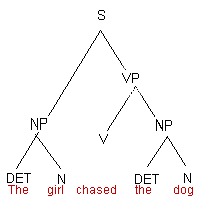Theories of International Relations
Article taken from http://www.sparknotes.com/us-government-and-politics/political-science/international-politics/section2.rhtml
A theory of international relations is a set of ideas that explains how the international system works. Unlike an ideology, a theory of international relations is (at least in principle) backed up with concrete evidence. The two major theories of international relations are realism and liberalism.
Realism
According to realism, states work only to increase their own power relative to that of other states. Realism also claims the following:
- The world is a harsh and dangerous place. The only certainty in the world is power. A powerful state will always be able to outdo—and outlast—weaker competitors. The most important and reliable form of power is military power.
- A state’s primary interest is self-preservation. Therefore, the state must seek power and must always protect itself
- There is no overarching power that can enforce global rules or punish bad behavior.
- Moral behavior is very risky because it can undermine a state’s ability to protect itself.
- The international system itself drives states to use military force and to war. Leaders may be moral, but they must not let moral concerns guide foreign policy.
- International organizations and law have no power or force; they exist only as long as states accept them.
Politicians have practiced realism as long as states have existed. Most scholars and politicians during the Cold War viewed international relations through a realist lens. Neither the United States nor the Soviet Union trusted the other, and each sought allies to protect itself and increase its political and military influence abroad. Realism has also featured prominently in the administration of George W. Bush.
Liberalism
Liberalism emphasizes that the broad ties among states have both made it difficult to define national interest and decreased the usefulness of military power. Liberalism developed in the 1970s as some scholars began arguing that realism was outdated. Increasing globalization, the rapid rise in communications technology, and the increase in international trade meant that states could no longer rely on simple power politics to decide matters. Liberal approaches to international relations are also called theories of complex interdependence.Liberalism claims the following:
- The world is a harsh and dangerous place, but the consequences of using military power often outweigh the benefits. International cooperation is therefore in the interest of every state.
- Military power is not the only form of power. Economic and social power matter a great deal too. Exercising economic power has proven more effective than exercising military power.
- Different states often have different primary interests.
- International rules and organizations can help foster cooperation, trust, and prosperity.
Example: Relations among the major Western powers fit a model of complex interdependence very well. The United States has significant disagreements with its European and Asian allies over trade and policy, but it is hard to imagine a circumstance in which the United States would use military power against any of these allies. Instead, the United States relies on economic pressure and incentives to achieve its policy aims.
Idealism
Idealism is a specific school of liberalism that stresses the need for states to pursue moral goals and to act ethically in the international arena. Idealists believe that behavior considered immoral on an interpersonal level is also immoral in foreign policy. Therefore, idealists argue that dishonesty, trickery, and violence should be shunned. In the United States, idealism has usually been associated with the Democratic Party since World War I.
Example: As he negotiated the treaty to end World War I in 1918, Woodrow Wilson worked to promote democracy and national self-determination. Wilson’s idealism led him to push hard for the creation of the League of Nations, an international organization that would fight aggression and protect the weak from the strong, in 1919. Scholars use the term Wilsonianto describe a person or group who advocates promoting democracy overseas in the name of idealism.



